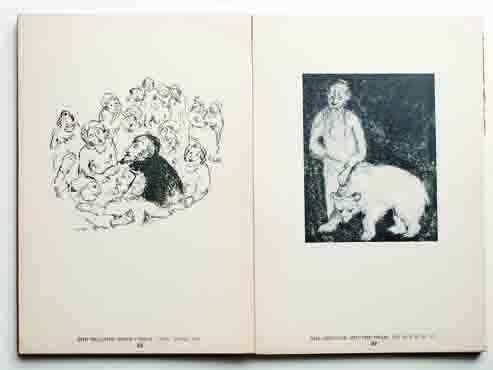
Chapters: Words, Pictures, Music
- Written by:
- Eitan Kensky
- Published:
- Fall 2015
- Part of issue number:
- 72

In 1950, Yosl Bergner, then a young artist and the son of a prominent Yiddish poet, exhibited illustrations inspired by I. L. Peretz’s Folkstimlekhe geshikhtn (Tales in the Folk Style) at the Arbeter Ring building in Montreal.
His illustrations stirred the city’s intellectual elite. They prompted the critic Shmuel Niger to reflect on the meaning of Jewish art, and the poet J. I. Segal to ponder the transformation of words into images.
Yet Segal chose to open his critical reflections with a vision:
As soon as the door opens, a light ignites in the corner of the hall—not an electric lamp, but a lantern hanging from a crooked pole, and the light that it gives off isn’t sharp, or loud, but a gentle blue, early-morning-like. There is no one in the hall, but, on one of the stools strewn along the side, a person sits in dark clothes, in a wide-brimmed black hat, which juts aggressively into the silent, raw blue light of the hall. This is I. L. Peretz himself, come to see or hear how a young Jewish painter plays the melody of his work on his colorful brush.
Segal may have imagined Peretz as a ghost, but this wasn’t a haunting. Bergner’s brush so animated Peretz’s prose that Segal saw Peretz straddling the border between life and death—an image that recalled any number of Peretz stories. At this moment, in that exhibit hall, the past and present of Yiddish culture came together to sing what Segal called “the nign [melody] of the brush.” Words became pictures, and together they became music.
